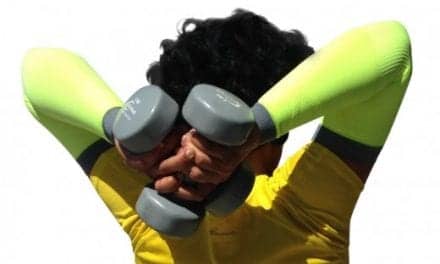According to a recent study, weekly sessions of noninvasive transcranial magnetic stimulation provided sufficient long-term pain relief in 61% of patients with central post-stroke pain, and delivered long-term relief for patients who continued for 1 year.
This study, “Repetitive Transcranial Magnetic Stimulation Once a Week Induces Sustainable Long-Term Relief of Central Poststroke Pain,” was presented at the International Neuromodulation Society 12th World Congress in Montreal and was published recently in the journal Neuromodulation: Technology at the Neural Interface.
Lead author Masahito Kobayashi, MD, PhD, of the Department of Neurosurgery, Saitama Medical University—Department of Neurology, Institute of Brain and Blood Vessels, Mihara Memorial Hospital in Saitama, Japan—who presented the study—and colleagues delivered repetitive transcranial magnetic stimulation (rTMS) to the primary motor cortex in 18 stroke patients once a week for at least 12 weeks, per a release from the International Neuromodulation Society.
These patients had undergone treatment for unilateral ischemic or hemorrhagic stroke. Several weeks into their recovery, the release explains, they had begun to experience severe hand or leg pain as a result of brain damage from the stroke. This pain can be extremely disabling and difficult to treat, the release continues, and can impact one’s general functioning, mood, and overall quality of life.
According to the release, of the 18 patients in the open-label series, six patients achieved satisfactory pain relief (a 40% to 69% reduction in pain scores), and five patients achieved excellent pain relief (a 70% or more reduction in pain scores). Pain relief was sustained in six patients who continued treatment for 1 year.
Overall, the release explains, eight patients who had severe stroke-caused dysesthesias, such as uncomfortable numbness or prickling, experienced less relief than patients without severe dysesthesias, suggesting possible neural circuit damage was inhibiting response to treatment.
None of the 18 patients reported any serious side effects from weekly sessions of 10 trains of 10-second 5Hz rTMS, at 90% of the active motor threshold, according to the release. Two patients reported transient, slight scalp discomfort after rTMS.
In the study’s first phase, the researchers assessed whether rTMS had a treatment effect on pain. To do so, the release explains, they randomly assigned six patients to receive either sham or active rTMS one week and the other treatment the next, and measured the patients’ pain scores before and after each session.
Once that phase had shown that the rTMS treatment reduced the patients’ pain, researchers began the open-label treatment phase in which the 18 patients underwent 12 weekly rTMS sessions. They measured the patients’ pain scores just before the weekly session.
Kobayashi and his research team collected this research data for 8 years, ending in 2014. He says in the release that some patients hoped to continue their rTMS treatments after the study ended, because their pain worsened after the rTMS treatment sessions were over. Nearly all of the patients said that after the study ended, their pain increased to the level that they experienced before undergoing rTMS treatments.
He adds in the release that the remaining question to answer is whether the level of the patients’ severe uncontrollable pain would continue to decrease if rTMS continued for several years.
[Source(s): International Neuromodulation Society, ScienceDaily]





